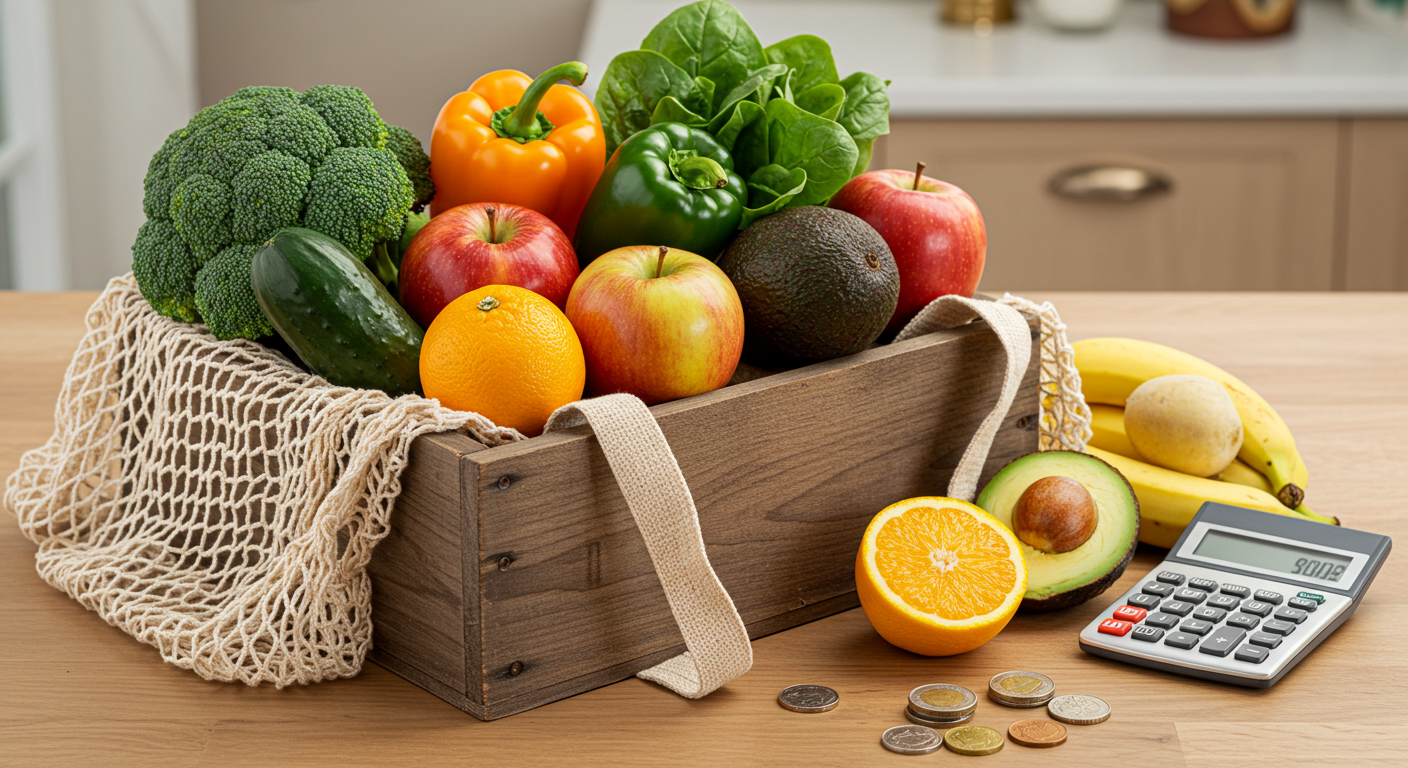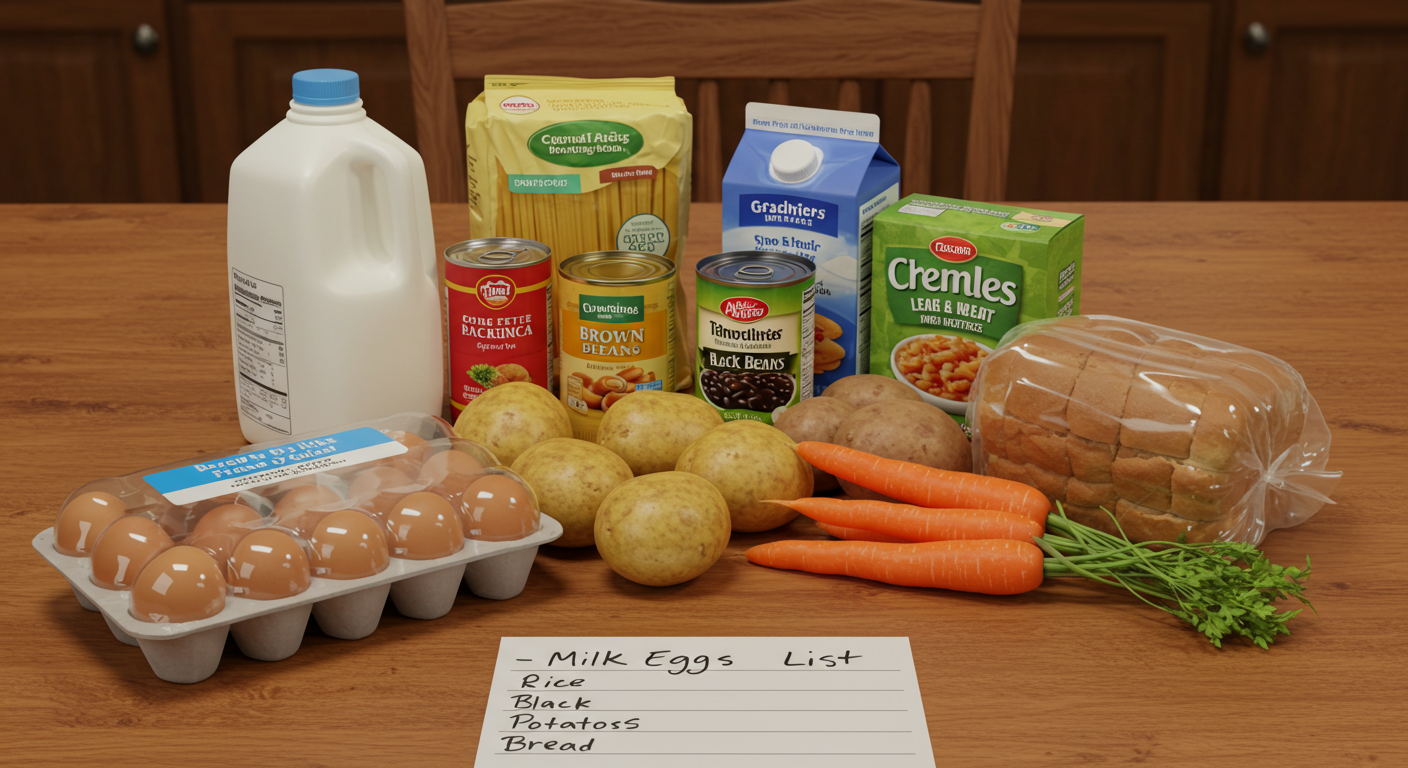How To Save Money On Organic Groceries: 9 Proven Tips
Eating organic is a goal for many families and health-conscious shoppers — but let’s be honest, it often feels like a luxury. With food prices still rising in 2025, making room for organic groceries on a tight budget can feel like a challenge.
The good news? You don’t have to choose between healthy and affordable. With the right strategy, you can absolutely save money on organic groceries without compromising on quality or taste.
Below, you’ll find 9 proven tips that make eating organic possible — even on a budget.
Why Organic Groceries Seem So Expensive
Understanding the Price Difference
Organic food is grown and produced without synthetic pesticides, GMOs, antibiotics, or artificial additives — and that process costs more. Certifications (like USDA Organic) and smaller-scale farming practices also add to the price tag.
But that doesn’t mean all organic food has to be expensive.
When Organic Is (and Isn’t) Worth It
A smart way to stretch your budget is to prioritize what you buy organic. The Environmental Working Group (EWG) publishes two helpful lists every year:

You can view the full updated lists on the EWG’s official website.
Use these as your compass, and you’ll get the health benefits of organic without overspending.
9 Proven Ways to Save Money on Organic Groceries
Here’s where it gets practical. These tips will help you shop smart, not hard — and keep your health goals intact.
1. Shop at Stores Known for Organic Deals
Not all grocery stores price organic food equally. Some of the most budget-friendly options include:
Do a price comparison locally — you might be surprised where the best deals pop up.
2. Use Store Apps and Weekly Flyers
Before you shop, check store apps and digital flyers for weekly organic discounts. You can often find:
Set alerts in your favorite apps for your top organic items — like organic milk, eggs, or apples.

3. Buy in Bulk When It Makes Sense
Organic dry goods like rice, oats, beans, and spices are often much cheaper when bought in bulk. Look for:
If you’re not sure where to begin, check out Bulk Buying Group: How to Save More by Shopping Together.
4. Know What to Prioritize Organic vs Non-Organic
As mentioned earlier, use the Dirty Dozen vs Clean Fifteen to decide what to always buy organic (like strawberries), and what to skip (like avocados).
This one tip alone can save you $10–20 per trip.
5. Join a CSA or Visit Farmers Markets
Local farms often grow organic (or near-organic) produce without the added cost of national certification. You can:
It’s not only cheaper — it supports local business too.
6. Look for Store Brands with Organic Labels
Don’t skip over the generic options. Many stores offer private-label organic products that are just as good as big brands:
These are often 20–40% cheaper than name brands — and equally high-quality.
7. Use Cashback & Grocery Rebate Apps
Apps like Ibotta, Fetch, and Rakuten regularly offer cash back for organic purchases.
It’s an easy way to “earn” money back on things you were going to buy anyway — especially for repeat items like almond milk, yogurt, or baby food.

8. Plan Meals Around Seasonal Organic Produce
In-season = cheaper. For example:
Buy extra when prices drop and freeze or prep for later meals.
9. Limit Prepackaged Organic Foods
This might be the most important tip: skip the processed “organic” snacks. Organic frozen pizza, cookies, and single-serve items can wreck your budget fast.
Stick to whole ingredients and make simple swaps — your wallet (and your body) will thank you.

Sample Organic Grocery List on a Budget
Here’s an example of organic grocery items you might find for around $55. Prices vary by region and store, so use this as a flexible guide, not a fixed rule.
| Item | Estimated Price |
|---|---|
| Produce | |
| Organic carrots (2 lbs) | $2.00 |
| Organic apples (3 lbs) | $4.00 |
| Organic spinach (bag) | $3.00 |
| Dairy | |
| Organic whole milk (1 gal) | $5.50 |
| Organic eggs (1 dozen) | $6.00 |
| Pantry | |
| Organic brown rice (2 lbs) | $3.00 |
| Organic canned beans (2) | $2.80 |
| Organic oats (1 lb) | $2.00 |
| Organic peanut butter | $4.00 |
| Protein | |
| Organic chicken thighs (2 lbs) | $12.00 |
| Total | ≈ $54.30 |
It’s not extreme — it’s just mindful.
Eat Organic Without Overspending
The goal isn’t perfection. The goal is progress — and the fact that you’re looking for ways to save money on organic groceries already shows you’re intentional about your choices.
Whether you start by switching one or two items, shopping at a different store, or downloading a cash-back app — it all adds up.
Also, planning your meals around what’s in your pantry is a smart way to stretch your food budget. Here’s how to keep track of pantry inventory and save money the easy way. Or check out Budget Meal Planning That Actually Saves You Money for an easy weekly plan.
Got a Favorite Organic Hack?
What tricks do you use to save on organic food?
Leave a comment below — I’d love to hear what’s working in your kitchen!





